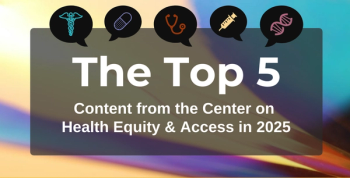
Zanubrutinib Associated With Better OS in Second vs Later Lines of R/R MCL Therapy
A pooled analysis with nearly 3 years of follow-up showed better outcomes when zanubrutinib was given in the second line vs later lines of therapy in patients with relapsed or refractory (R/R) mantle cell lymphoma (MCL).
Initiating zanubrutinib in the second line was associated with longer overall survival (OS) vs using the agent in later lines of therapy for relapsed or refractory (R/R) mantle cell
The study provides an updated analysis of pooled data from the BGB-3111-AU-003 (NCT02343120) and BGB-3111-206 (NCT03206970) trials, each of which supported the FDA’s accelerated approval of zanubrutinib for R/R MCL in 2019.2
MCL is an aggressive and rare subtype of B-cell non-Hodgkin lymphoma that typically carries a poor prognosis, with patients usually relapsing following frontline therapy. While the disease remains incurable, zanubrutinib, a second-generation Bruton tyrosine kinase (BTK) inhibitor, emerged as a promising option for R/R MCL with a combined objective response rate (ORR) of 84% in BGB-3111-AU-003 and BGB-3111-206 trial participants. In a previous pooled analysis of these studies, the ORR was 85%, the authors noted.
Despite novel therapy strategies, a question remaining is the best strategy to optimize outcomes in this patient population. The authors explained that long-term outcomes in MCL have improved, but research has found survival outcomes to worsen with each additional line of chemoimmunotherapy.
“These facts along with new drugs, such as BTK inhibitors, becoming available for the treatment of R/R MCL, have led to a pressing need to prioritize and sequence these therapies in the treatment algorithm for attaining maximum and durable treatment responses,” the authors wrote.
The current analysis extends the follow-up time of a previously published pooled analysis of 112 patients who participated in either the phase 1 BGB-3111-AU-003 study (n = 33) or phase 2 BGB-3111-206 study (n = 79). Median follow-up was 31.3 months and 35.2 months in the phase 1 and 2 studies, respectively. Most patients had stage III or IV disease (91%; n = 102), and 21.4% (n = 24) had high MIPI risk scores. The overall median patient age was 62 (IQR, 54-68) years, and 41 patients (36.6%) patients were 65 years or older.
The overall study population included 41 patients (36.6%) who received second-line zanubrutinib and 71 (63.4%) who received zanubrutinib in a later line or therapy. After balancing the first- and second-line cohorts for baseline covariates, the effective sample size of 91 patients included 30 patients (33%) treated with first-line zanubrutinib and 61 (67%) treated in later lines.
At a median follow-up of 35.2 months, median overall survival was not estimable (NE), but after weighting, the second-line group experienced statistically significantly improved OS compared with the group that received zanubrutinib in later lines (HR, 0.459; 95% CI, 0.215-0.980; P = .044). Numerically better OS was also noted in the original study population, but this finding was not statistically significant.
The median rate of OS was 66.8% in the overall pooled population, and the second-line group had a numerically higher rate of OS compared with the later-line group (82% and 71.7%, respectively). Median progression-free survival (PFS) was 26.6 months (95% CI, 16.8-NE) in the overall population, with the second-line and later-line groups showing similar PFS after weighting, although the second-line group had a numerically longer PFS (27.8 months) compared with the later-line group (22.1 months).
ORR was numerically higher among patients treated in the second line vs those treated in later lines (88.6% vs. 85.7%) in the weighted populations, and the overall ORR was consistent with past findings at 84.8% (95% CI, 76.8%-90.9%). Median duration of response was 30.6 months (95% CI, 23.1- NE) in the overall cohort but NE in the second-line group compared with 30.6 months in the later-line cohort.
Regarding safety, 96.4% of patients experienced at least 1 adverse event (AE), and 53.6% experienced at least 1 grade 3 or higher AE. In the weighted analysis, 94.6% of patients treated in the second line and 98.2% of patients in the later-line group experienced at least 1 AE.
The study’s design as a post hoc analysis and small sample size were limitations, as well as the single-arm designs of the parent studies.
“Overall, the results from this 35.2-month follow-up analysis confirm the long-term efficacy and safety of zanubrutinib monotherapy in R/R MCL,” the authors wrote. “The study also confirmed that second-line zanubrutinib treatment was associated with significantly improved OS compared with later-line treatment in patients with R/R MCL along with a similar well-tolerated safety profile, thereby supporting the earlier use of zanubrutinib in the treatment setting.”
References
1. Song Y, Zhou K, Zou D, et al. Long-term outcomes of second-line versus later-line zanubrutinib treatment in patients with relapsed/refractory mantle cell lymphoma: an updated pooled analysis. Cancer Med. 2023;12(18):18643-18653. doi:10.1002/cam4.6473
2. FDA grants accelerated approval to zanubrutinib for mantle cell lymphoma. FDA. November 5, 2019. Accessed October 20, 2023. https://www.fda.gov/drugs/resources-information-approved-drugs/fda-grants-accelerated-approval-zanubrutinib-mantle-cell-lymphoma
Newsletter
Stay ahead of policy, cost, and value—subscribe to AJMC for expert insights at the intersection of clinical care and health economics.








































